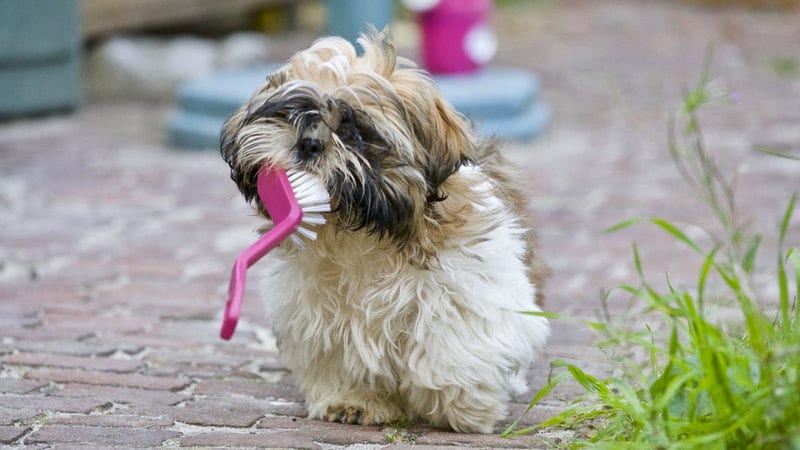Brushing your pet’s teeth
Dogs and cats can have their teeth brushed in order to eliminate the dental plaque that can cause tooth decay and the formation of tartar, which can lead to gum disease. You should begin a regular, daily brushing routine as soon as you bring your new kitten home or, in the case of puppies, at six to eight weeks of age. Even older dogs or cats can be trained to accept having their teeth brushed.
You simply need to introduce the activity gradually and make the experience a positive one for your pet, using the technique your veterinary professional has taught you. Reassure and praise them profusely throughout the process, and reward them with a very special treat when it’s finished.
Here’s how it can be done:
- Start by dipping a finger in beef stock for dogs, and tuna water or warm water for cats. Rub this finger gently over your pet’s gums and one or two teeth. Repeat until your pet seems fairly comfortable with this activity.
- Gradually, introduce a gauze-covered finger and gently scrub the teeth with a circular motion.
- Then, you can begin to use a toothbrush, either an ultra-soft model designed for people (baby tooth-brushes work well for cats) or a special pet toothbrush or finger brush, which is a rubber finger covering with a small brush built-in at its tip. Always consult your veterinary professional about the most appropriate products and techniques for your pet.
- Finally, once your pet is used to brushing, introduce the use of pet toothpaste in liquid or paste form. Most of these contain chlorhexidine or stannous fluoride – ask your veterinarian for their recommendations. Don’t use human toothpaste, as it can upset your pet’s stomach.
If using a finger brush, transition to a soft pet or baby’s toothbrush. Focus on the outside surfaces of the teeth and avoid placing your fingers between the upper and lower teeth. Your vet may also advise the use of an antiseptic spray or rinse after brushing.


